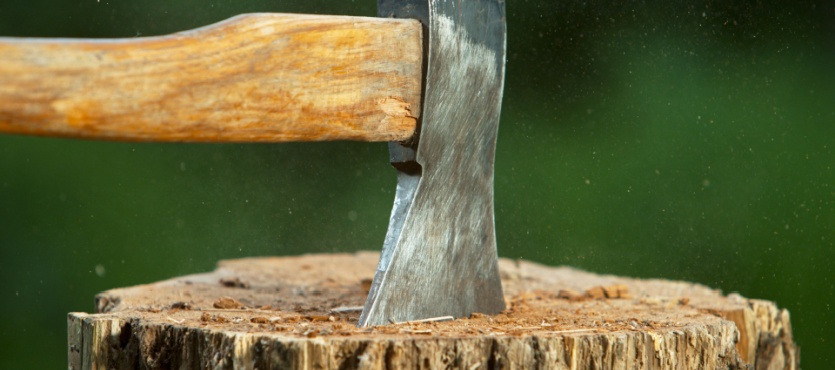Axe throwing may seem like a straightforward activity—pick up an axe, aim at the target, and throw. However, behind every successful throw is a blend of physics, precision, and technique. Whether you’re a beginner or an experienced thrower, understanding the science behind axe throwing can improve accuracy, control, and consistency. At Axe Niagara, we believe that mastering the perfect throw requires more than just strength—it’s about balance, rotation, and force. Let’s break down the physics behind axe throwing and what makes a throw stick to the target.
Understanding the Rotation of an Axe
One of the key principles in axe throwing is rotational physics. When you throw an axe, it rotates through the air before making contact with the target. The number of rotations depends on the distance from the target, the force of the throw, and the release angle.
An ideal throw follows a predictable rotation pattern, typically completing one full rotation before embedding into the wooden target. If the axe under-rotates, it may hit the target handle-first, and if it over-rotates, the blade might miss entirely. This is why positioning and consistency are crucial—every throw must match the right distance and force for the axe to land blade-first.
Most axe throwing venues recommend throwing from about 12-15 feet away from the target. At this distance, the axe has enough time to rotate properly, but adjustments may be needed based on throwing style.
The Importance of Release Angle
The release angle of the axe determines how smoothly it rotates. If an axe is released at the wrong angle—tilted too far forward or backward—it can cause the throw to be inconsistent. A clean release, where the axe leaves the hand with minimal wobble, ensures better accuracy and a controlled rotation.
For an ideal release:
- Keep your wrist straight and avoid flicking it as you let go.
- Release the axe at the peak of your forward motion, similar to how you would release a ball in an overhand throw.
- Follow through with your motion to maintain a smooth trajectory.
Beginners often struggle with inconsistent releases, but with practice, it becomes second nature. Adjusting the grip, stance, and arm movement can significantly improve the quality of the throw.
The Role of Force and Speed
Many first-time throwers assume that throwing the axe harder will result in a better stick, but this isn’t always true. The force of the throw must be balanced to allow proper rotation while ensuring the axe penetrates the wooden target. Too much force can cause over-rotation or make the axe bounce off, while too little force may prevent it from sticking at all.
A well-thrown axe relies on a controlled, smooth motion rather than brute strength. The key is generating enough momentum to carry the axe forward while letting rotation do the work of embedding it into the target. Finding the right balance of speed and control is what separates skilled throwers from beginners.
Gravity and the Throwing Trajectory
Gravity plays an essential role in axe throwing by influencing the arc of the throw. Unlike darts or baseballs, which follow a flatter trajectory, axes are heavier and naturally follow a slightly downward curve as they move toward the target.
Because of this, throwers must compensate for gravity by aiming slightly higher than their intended target spot. This is especially important for longer-distance throws, where the downward pull of gravity is more noticeable. A well-aimed throw considers both the initial velocity of the axe and how gravity will affect its path.
Choosing the Right Axe for a Perfect Throw
Not all axes are created equal when it comes to throwing. The weight, handle length, and blade shape all affect the physics of the throw.
- Weight: A heavier axe requires more force to rotate properly but can offer more stability. A lighter axe is easier to control but may be harder to stick in the target.
- Handle Length: A longer handle allows for a smoother release and a more predictable rotation. Shorter handles can be more challenging to control.
- Blade Design: The edge sharpness and blade width impact how easily the axe sticks to the target. A properly maintained axe with a sharp, well-balanced blade increases the chances of a successful throw.
At Axe Niagara, we provide high-quality axes designed for optimal throwing performance, making it easier for beginners and experienced throwers alike to improve their technique.
Perfecting Your Stance and Grip
To maximize control and accuracy, your stance and grip should be comfortable and stable. Stand with your feet shoulder-width apart, keeping your dominant foot slightly forward for balance. Grip the axe firmly but not too tightly—an overly tight grip can interfere with a clean release. The goal is to generate enough control without restricting movement.
Experimenting with both one-handed and two-handed throws can help determine which technique works best for you. Many beginners start with two hands for stability before transitioning to one-handed throws as they gain confidence.
Why Understanding the Physics Matters
While axe throwing is an exciting and fun activity, understanding the physics behind it makes the experience even more rewarding. Recognizing how rotation, force, release angle, and gravity affect each throw can help refine technique and improve accuracy. Whether you’re aiming to hit a perfect bullseye or just trying to land more consistent throws, applying these principles will lead to better results.
Experience the Science of Axe Throwing at Axe Niagara
Mastering the perfect throw isn’t just about luck—it’s about technique, physics, and practice. At Axe Niagara, we provide expert guidance to help throwers of all levels develop their skills and gain a deeper appreciation for the science behind the sport. Whether you’re new to axe throwing or looking to fine-tune your technique, our team is ready to help you improve. Ready to put your skills to the test? Contact us today to book your session and experience the thrill of axe throwing firsthand!

